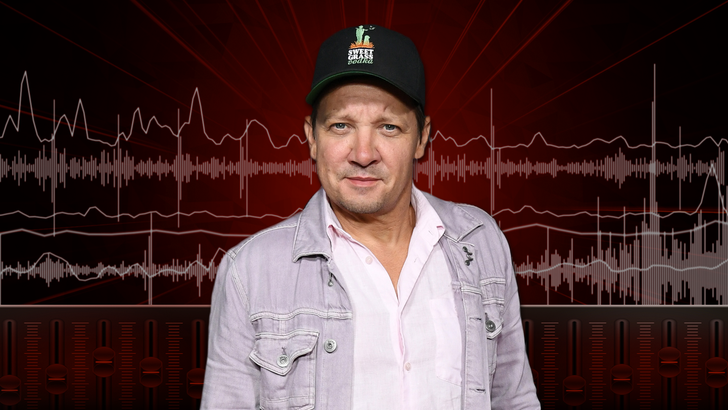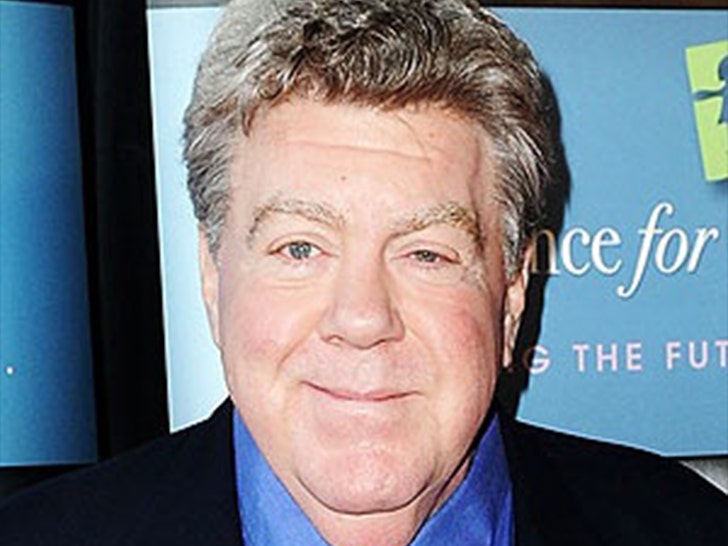
```Jeremy Renner's terrifying snowplow accident in early 2023 captivated the world,
a horrific event that left the beloved actor with devastating injuries, including over 30 broken bones. His long and arduous journey to recovery has been well-documented, a testament to his resilience and the dedication of his medical team, family, and friends.
However, a recent revelation from Renner himself has added a surprising layer of complexity to the narrative of his brush with death, sparking discussion and raising questions about the nature of near-death experiences and the very human drive to preserve life. Jeremy Renner, in an interview with Kelly Ripa on her "Let’s Talk Off Camera" podcast, shared details about the moment he was facing death after being crushed by the multi-ton snowplow.
While the physical reality was one of extreme trauma and pain, Renner described a profound and unexpected sense of peace during the experience, a feeling so powerful that its interruption by his rescuers initially caused him frustration.
The Peaceful Brink of Death
Renner recounted the moments where he felt himself transitioning, describing it as a state of "wonderful, wonderful relief to be removed from your body."He elaborated, calling it "the most exhilarating peace you could ever feel," a feeling so "magical and magnificent" that it transcended his physical agony. This description aligns with many reported near-death experiences (NDEs), where individuals recount sensations of leaving their physical form, moving towards a light, and experiencing an overwhelming sense of calm and absence of pain, often accompanied by feelings of love and understanding.
For Renner, in the throes of unimaginable physical destruction, this peaceful state offered an escape, a reprieve from the brutal reality of his situation.
Interruption and Resentment
The surprising part of Renner's account came when he discussed being brought back to consciousness and stability by the swift and effective actions of his rescuers.According to the report, Renner admitted that for a time, he was "pissed" at them for pulling him back from that serene state. This statement, while perhaps jarring at first glance, speaks to the profound nature of the peace he felt and the subjective experience of being on the threshold of death. It was not a logical complaint against the life-saving efforts, but rather a reflection of the powerful pull of the state he was in – a state he found deeply comforting and liberating amidst severe trauma. This sentiment highlights a fascinating, albeit complex, aspect of survival. While rescuers are driven by the fundamental imperative to save a life, the individual being saved may, in that moment of altered consciousness or profound physical distress, experience a detachment from the desire to live or even a welcoming of the peaceful alternative that a near-death state can present.
Understanding Near-Death Experiences (NDEs)
Jeremy Renner's description fits within the broad category of phenomena known as Near-Death Experiences.NDEs are subjective events reported by people who were close to death or experienced clinical death and were subsequently revived. While accounts vary widely, common elements often include:
* An out-of-body experience, feeling like consciousness is separate from the physical body.
* A feeling of peace, tranquility, and absence of pain.
* Seeing a bright light or tunnel.
* Encountering deceased loved ones or other beings.
* A life review, seeing moments from one's past.
* A feeling of moving towards a boundary or point of no return.
The scientific community has explored various explanations for NDEs, ranging from purely physiological responses of the dying brain to psychological mechanisms for coping with trauma. Some theories suggest that a rush of endorphins, lack of oxygen to the brain (anoxia), abnormal activity in the temporal lobes, or the release of certain chemicals can induce altered states of consciousness that manifest as NDE phenomena.
Others propose psychological explanations, viewing them as vivid dreams or hallucinations triggered by extreme stress or the mind's way of processing the concept of death.
There is also a perspective that views NDEs as evidence of consciousness existing independently of the physical brain, a topic that remains a subject of intense debate and philosophical inquiry. Regardless of the ultimate explanation, Renner's experience adds another data point to the compelling and mysterious phenomenon of NDEs, particularly occurring during extreme physical trauma.
The Paradox of Pain and Peace
Renner's accident involved catastrophic physical damage. Bones were fractured in numerous places; he suffered a collapsed lung and a pierced liver, among other life-threatening injuries.The inherent contrast between this level of physical devastation and the "exhilarating peace" he reported is striking.
It suggests that the subjective experience of dying or being near death can be entirely separate from the body's physical suffering.
This disconnect is one of the most intriguing aspects of NDE accounts. It raises questions about where consciousness resides and how it functions when the body is on the verge of shutting down.
The peace he felt could have been a physiological response, a psychological coping mechanism, or something else entirely – a state the mind/consciousness entered as the body's systems began to fail. For a brief, terrifying period, that state offered a profound sense of relief from the unbearable physical reality.
The Rescuers: An Unintended Interruption
From the perspective of the rescuers – his neighbors, friends, and emergency services – their actions were purely and unequivocally focused on preserving life.They saw a man critically injured and in need of immediate, life-saving intervention. Their training, their humanity, and their bond with Renner compelled them to act decisively and courageously. They were successful, pulling him back from the brink and enabling his long, arduous recovery.
While Renner's comment about being "pissed" might sound ungrateful on the surface, it is crucial to understand it as a description of his subjective state *in that fleeting moment* of peaceful transition, rather than a reasoned critique of the heroic efforts that saved him.
It reflects the powerful draw of the near-death state he experienced, not a true desire for his rescuers *not* to have acted. Their intervention, while perhaps an interruption to that specific peaceful feeling, was the very thing that allowed him to continue his life and experience the world again.
Beyond the Headline: A Shift in Perspective
It is important to look beyond the sensational headline and consider Renner's full narrative since the accident.While he described that initial feeling of being interrupted, he has also spoken extensively about the profound impact the accident and his subsequent recovery have had on his life. He has expressed immense gratitude for his survival, for the love and support of his family and friends, and for the work of the medical professionals who saved him.
He has spoken about gaining a new perspective on what is truly important, prioritizing his health, his family, and finding joy in simpler things.
He has even indicated that the experience has changed his approach to acting, perhaps reducing his energy for overly challenging or physically demanding roles and focusing on projects that resonate more deeply with his new outlook.
His comment about being "pissed" was a snapshot of a specific subjective experience during the trauma, a moment of feeling peace amidst chaos. It does not negate the gratitude he feels for the life he was given back.
The near-death experience itself, while initially desired for its peace, ultimately served as a catalyst for a profound re-evaluation of his life and a deepened appreciation for the world he was brought back to.
The Enduring Mystery
Jeremy Renner's candid sharing of his near-death experience adds to the growing body of anecdotal evidence surrounding this phenomenon.It highlights the deeply personal and often paradoxical nature of facing mortality. While science continues to seek definitive explanations for NDEs, stories like Renner's underscore their powerful impact on those who experience them.
His initial feeling of annoyance at being pulled back from a state of perfect peace is understandable within the context of the subjective feeling he described, even as the objective reality is that his rescuers performed a heroic, life-saving act. Ultimately, Renner's survival is a source of relief and joy for many. His journey back to health is inspiring. And his willingness to share the complex, sometimes counterintuitive, aspects of his near-death experience offers valuable insight into the human condition, the mysteries of consciousness, and the profound, often unexpected, feelings that can arise when one stands at the very edge of life.
While he may have felt "pissed" in that fleeting moment of transition, his continued presence and recovery stand as a testament to the value of the life that was saved.



